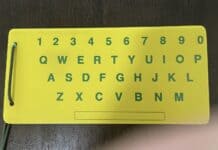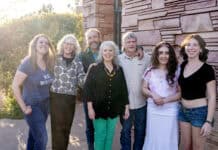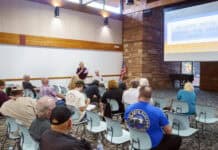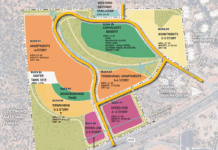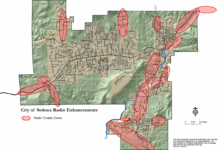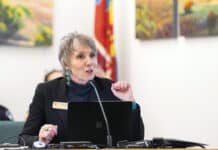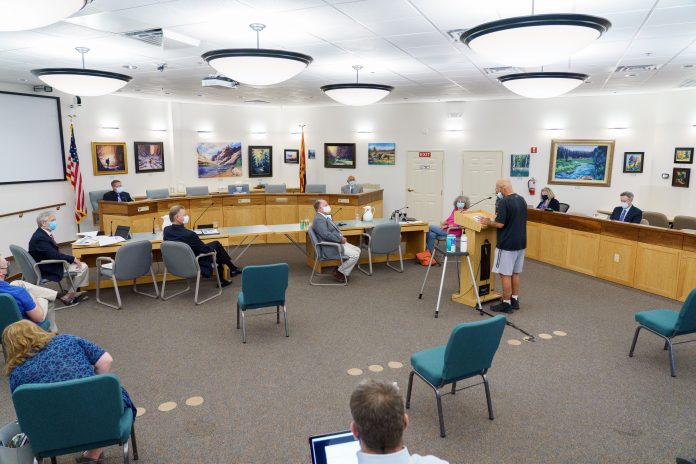
In many towns and cities, lighting codes are often pushed to the far back burner of a very large stove. But Sedona is different.
As one of the first dozen communities and areas in the world recognized by the International Dark-Sky Association, Sedona prides itself on being a stargazer’s paradise. So accordingly, lighting issues are taken very seriously.
On Tuesday, Sept. 8, Sedona City Council spent nearly three and a half hours making modifications to the recently updated Land Development Code, the bulk of which was about lighting.
Two years ago the city of Sedona’s Land Development Code was updated and simplified — the first time in more than two decades.
During the July 21 Sedona Planning and Zoning Commission meeting, commissioners were looking to do some housekeeping regarding the updated LDC. The proposed revisions included typographical and clerical corrections, changes for clarity, elimination of redundancies and other more substantive revisions to better reflect the intent of the LDC and goals of the Sedona Community Plan.
Areas of the LDC that were tweaked included zoning districts, regulation use, development standards, signs and exterior lighting.
During that meeting, the commissioners could not come to a consensus on what recommendation it would give to council. And while the entire LDC update was unanimously approved by council, it wasn’t unanimous on the lighting issue.
In his presentation, City Senior Planner Mike Raber said there are several proposed changes to the lighting standards that were originally proposed by Keep Sedona Beautiful.
Staff did not, however, include all of KSB’s requested changes, acknowledging the need to balance dark skies with allowing lighting sufficient for the public to feel comfortable gathering in commercial areas and ensuring safety when doing so.
In the current LDC, all Class 2 lighting — for security and public safety, also including parking lots — is to be either low-pressure sodium, narrow-spectrum amber LEDs or warm lighting alternatives not to exceed a color temperature of 3,000 Kelvin.
Kelvin is a unit used in lighting to measure the color temperature of a particular light bulb. In short, the higher the Kelvin rating, the whiter the light will be.
“We are at a bit of a deficit here because lighting changes were nowhere on staff’s radar when we were coming back to you with LDC updates,” Assistant City Manager and Community Development Director Karen Osburn said. ”We had countless meetings with KSB and tried our best to understand from the perspective of someone who has been doing lighting. This is a whole area of expertise, that quite frankly, we don’t have. All these changes — every last one of them — came from KSB.”
KSB was not represented at the meeting to address council. KSB is a nonprofit organization; it is not a government agency.
The International Dark- Sky Association had recommended that LED warm lighting alternatives at 3,000 Kelvin or lower were acceptable. Lowering this to 2,700 would exceed their recommendation while maintaining enough color rendition and visibility to ensure safety and usability of those lit areas.
The debate among council was whether or not to require 2,700 Kelvin — a more subdued lighting — as opposed to 3,000 Kelvin, which is what can be seen at the Marriott and Nexxus building. There are currently no known examples of 2,700 Kelvin usage in Sedona.
Vice Mayor John Martinez and Councilman John Currivan were in favor of keeping the requirement at 3,000 Kelvin but the remaining members wanted it changed to 2,700. And if that proves to be an issue for developers, they said a simple vote could return it to the 3,000 requirement.
The 2,700 Kelvin requirement would be for Class 2 lighting in new development and redevelopment going forward. Class 2 lighting is permitted to remain on all night and is used in areas such as parking lots. The limit for Class 1 lighting, which is required to be turned off when the business closes, remains unchanged at 4,000 Kelvin.
According to a city report, the Sedona Police Department was also asked to assess the amber vs. warm lighting from a safety standpoint. SPD had concerns about the insufficiency of illumination in the locations they observed with only amber lighting.
The police department recommended the warm light over the amber for locations where security was a concern and accurate color rendition was important, such as commercial parking lots. SPD believed amber may be acceptable in locations where it was supplemented by white lights, such as city hall, but had concerns about it being the only light source due to the lower visibility and the way it distorts colors.


